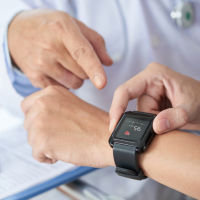The choice of the mobile technology used for contact tracing substantially affects the social and economic cost of quarantine policies, while the adoption rate can be lower than commonly thought.
You might also like:COVID-19 Contact Tracing: Apps vs. Manual Work
The importance of monitoring and controlling emerging infectious diseases has
been highlighted by the COVID-19 pandemic. New technologies, such as
internet-based surveillance, remote sensing, or mobile phones, can help to
predict, prevent and control the spread of a disease.
Precision and Efficiency Assessment
A recent study, published in IEEE Access, has looked into the effects of using smartphone contact tracing technology on the diffusion of infectious diseases, such as COVID-19. Specifically, the authors focus on the strategies of detecting infected individuals, tracing their contacts, and selectively isolating suspected cases. They analyse several data collection technologies, namely cellular networks, Wi-Fi, GPS and Bluetooth, and assess their tracing precision through a stochastic and then a deterministic model. Based on this, they further evaluate several possible scenarios for smartphone-based contact tracing.
The results show that an effective contact tracing technology is the one
that is precise, rapid and widely adopted (more than 80% of the population). The
authors note that due to such requirements the efficiency of smartphone-based
contact tracing may be low during the first outbreak, but will increase in the
future, with immunity gained by at least 20% of the population and other lenient
social distancing measures applied.
Contact network graph for the first 40 nodes during the first day. a) Real
contacts; b) Bluetooth contacts (Source: Hernández-Orallo et al. 2020).
With more precise technologies greater quarantine selectivity can be achieved (eg, Bluetooth allows to detect contacts within a 2-3-metre distance, which in epidemiological models is a contact capable of passing the infection), but the impact on the final number of infected individuals is insignificant. The authors stress that rapid contact tracing and isolation of suspected cases is key, particularly for a disease such as COVID-19, with a high reproduction rate and low detection rate.
Misinterpretation of 60%
Back in April, a team at Oxford University suggested an epidemiological model to help to configure a contact tracing app for coronavirus. According to that model, the epidemic could be stopped if approximately 60% of the population use the app – a figure widely cited since then. The researchers also noted that even with lower adoption levels there still would be reduction in the number of coronavirus cases and deaths. This latter part, however, went majorly unnoticed. As Andrea Stewart, a spokeswoman for the Oxford team, told MIT Technology Review’s Patrick Howell O'Neill, “There’s been a lot of misreporting around efficacy and uptake … suggesting that the app only works at 60% – which is not the case.”
As O’Neill explains, with contact tracing blanket coverage is, of course,
preferable, but it does not mean that lower usage makes the apps ineffective –
it may simply require additional prevention and containment measures. Professor
Christophe Fraser, who led the research, said the initial assumption was that
lower levels of usage might have very small benefits. “The expectation going in
was that app usage wouldn’t be very effective at low levels,” he explained. “What
we found in the simulation was that that actually isn’t the case. We’ve been
working to understand why we actually see benefits of usage accruing.”



























